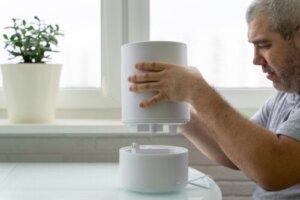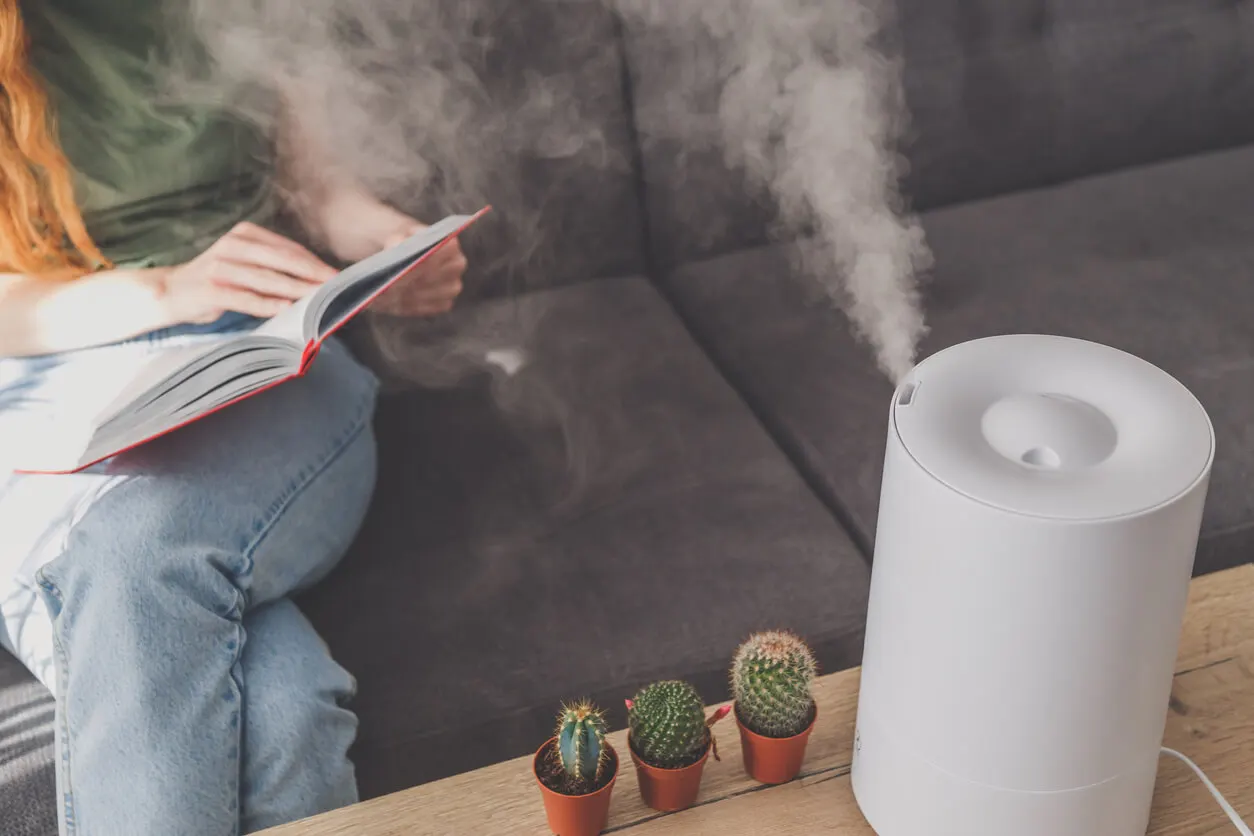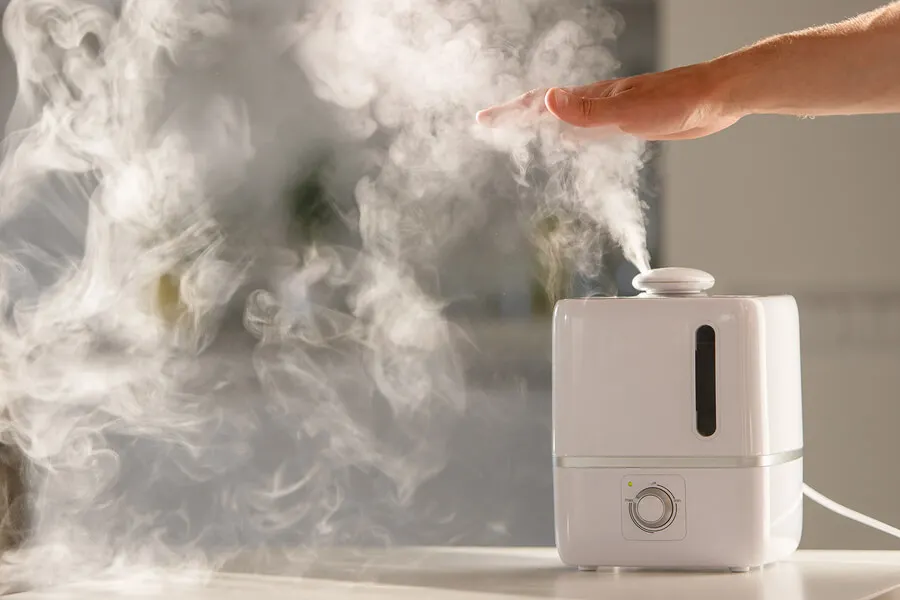How to Clean and Disinfect a Humidifier

Humidifiers have become a favorite appliance in hundreds of homes, and even more so during the winter months. However, they need special care to ensure they work properly. If you want to learn how to clean and disinfect a humidifier, read on.
A humidifier can be a great ally to increase the humidity levels of a space in cold weather or to help set the mood in rooms with aromatic essences. However, if not cleaned regularly, it can become a perfect spot for the proliferation of bacteria and germs.
Is it important to clean and disinfect a humidifier?
Humidifiers are very practical devices for maintaining home spaces with the indicated humidity levels. However, due to their design, they’re also a favorable environment for the multiplication of microbes and bacteria. This is because as humidity increases, they provide the necessary substrate for mold and fungi to reproduce easily.
Learning to clean and disinfect a humidifier is essential, since having a contaminated appliance in the home could make you sick. Failure to do so will only spread harmful bacteria throughout the environment, creating a source of infection.
This can be potentially dangerous, and even more so in people with respiratory problems, since an environment with excess humidity will affect the health of the lungs. At the same time, not cleaning and disinfecting a humidifier will reduce its useful life.

We think you may also enjoy reading this article: Do You Need a Humidifier or a Dehumidifier?
Why do humidifiers get dirty?
It’s a mistake to think that these household appliances don’t require cleaning since they only work with pure water. In reality, this belief is far from the truth, especially if you use water straight from the tap.
This is because tap water often contains minerals that accumulate in the form of white powder. The levels of these minerals can vary depending on where you are.
Over time, mineral deposits can be stored at the bottom of the unit, helping bacteria and mold to grow. By design, the humidifier vaporizes bacteria and fine white dust.
Hence the importance of knowing how to clean and disinfect a humidifier to maintain all its benefits and not generate allergies or serious health problems, especially in people with asthma or sinusitis.
Steps to clean and disinfect a humidifier
Now that you know what causes dirt in humidifiers and the importance of maintaining regular cleaning, take note of the following steps. The process is very simple and will only take a couple of minutes, so don’t worry. You will only need water and vinegar.
We think you may be interesting in reading this, too: The Advantages of Having a Dehumidifier at Home
1. Consult the instruction manual
Since there are a wide variety of humidifiers on the market, it’s crucial that you consult the instruction manual before you proceed with cleaning. This will ensure that you don’t make any accidental mistakes that could completely damage the appliance.
2. Unplug it from the power outlet
After carefully reading the instruction manual, make sure to unplug the humidifier from the outlet to prevent any mishaps. Now, following the manufacturer’s instructions, carefully open the appliance and remove the water tank to empty it completely.
3. Clean the dirt with vinegar to disinfect a humidifier
This inexpensive and easily available ingredient is a great ally when it comes to cleaning and disinfecting a humidifier. Once you have the device empty and disassembled, pour a generous amount of white vinegar into the base.
Shake it a little and make sure the vinegar has contact with all the walls where the water usually reaches. If you have small parts, submerge them in the vinegar and let them sit for at least 30 minutes.
4. Rinse with abundant water
When more than half an hour has passed, you can throw away all the vinegar and rinse everything with abundant water. If necessary, you can use a soft bristle brush to finish cleaning any remaining minerals or stubborn dirt.
Take your time and try to leave the inside of the humidifier as clean as possible.
5. Disinfect a humidifier if necessary
If you think your humidifier needs further cleaning and disinfection, you can use a little bleach to make sure all bacteria are removed.
To do this, mix one tablespoon of liquid bleach with one gallon of water. Then, pour in half of the solution and shake to reach all the walls of the unit. Let it sit for 30 minutes and then rinse very well with cold water.

6. Reassemble the humidifier
Now that the tank and all parts are clean and dry, you can reassemble your humidifier and put it back into operation. Fortunately, now you can do this with certainty that the air your appliance expels is free of bacteria and impurities harmful to your health!
7. Change the filter every so often to clean and disinfect a humidifier
To ensure proper operation of our humidifier, it’s also necessary to replace the water filter every 30 to 60 days, depending on its use. You should do this even more frequently if you use tap water or essences for air freshening, since the minerals can harden the filter and form a crust.
Make sure to clean and disinfect the humidifier in your home
Keeping our appliances clean and disinfected is essential to ensure their proper functioning and enjoy their health benefits. Now that you know all the steps to learn how to clean and disinfect a humidifier, put them into practice to preserve its useful life and keep your family free of allergies and bacteria in the air!
All cited sources were thoroughly reviewed by our team to ensure their quality, reliability, currency, and validity. The bibliography of this article was considered reliable and of academic or scientific accuracy.
- Drobnic, F., & Clau, L. B. (2009). Guía del asma en condiciones ambientales extremas. Archivos de Bronconeumología, 45(1), 48-56.
This text is provided for informational purposes only and does not replace consultation with a professional. If in doubt, consult your specialist.








